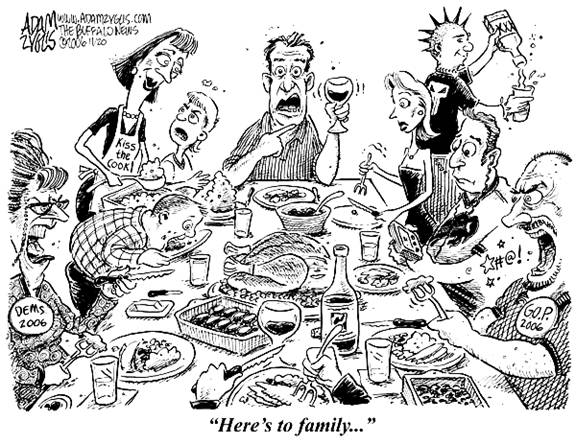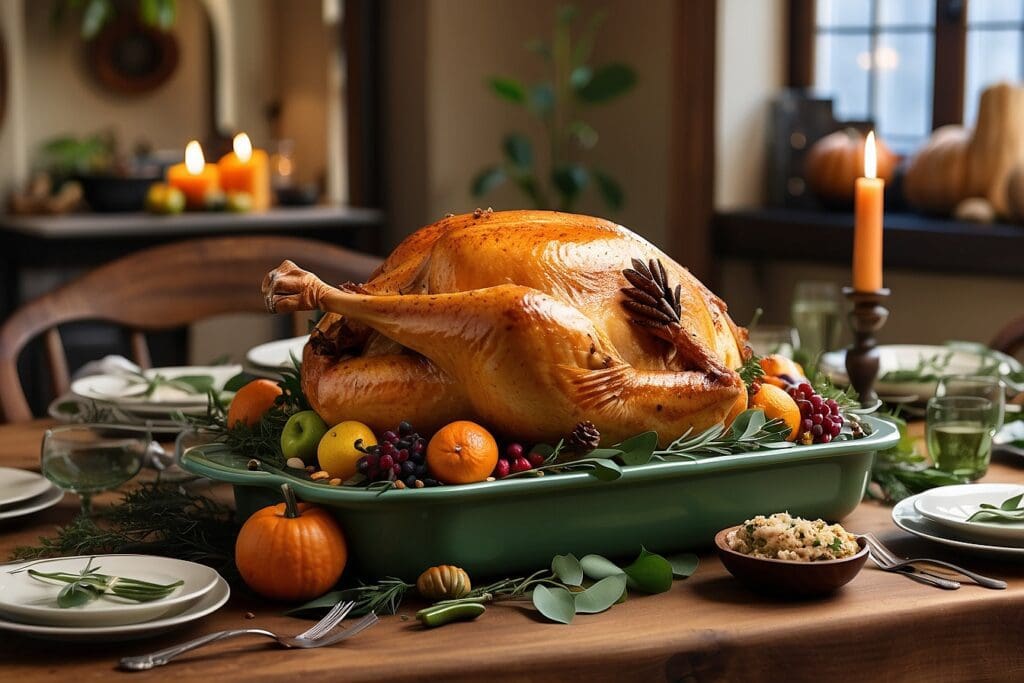Thanksgiving is just around the corner and this year we have a few green additions to our family. With my newly turned eco leaf and with one of our family members going vegetarian, this year Thanksgiving presents a whole new set of challenges.
But the idea of a green or even a vegetarian Thanksgiving seems like blasphemy to die hard turkey stuffers. To ease them into what will inevitably be a culture shock, I already started dropping the idea of a green feast that goes beyond just an organic turkey. When asked how they’d “green” their Thanksgiving, I got all sorts of responses from “add more plants to the dinner table” to “use green dye on the turkey.” If we’re to be literalists, then I’d rather go cold turkey than sit across the table from a green turkey.
Rethinking the Main Course
The veggie kick brought with it the “turkey ” idea—a tofu turkey that received grimaces from most non-vegetarians, including myself, if only because of the horrid name for it. Another option is to try a soy-seitan turkey – (for a great recipe, check out Chef Bryanna Clark Grogan). Soy is an alternative to tofu, and for many it has a much more appealing taste.
Most people are immediately turned off when thinking of vegetarian alternatives to traditional meat dishes. But this isn’t because of experience, (since mostly they’ve never even tried it), but rather because of conditioning. We’re brought up being programmed to think fowl when imagining a Thanksgiving meal. It’ll take a lot of deprogramming and a little willingness on people’s part to taste a soy turkey – but once they try it, they’ll be one step closer to rethinking their attitude.
Your part in all this is to make sure you don’t botch it up. Find a great recipe, and do a quick pre-turkey day test run. This way you can rest assured on the big day and know your feast will be a big hit, with some turkey somewhere thanking you for being spared the gauntlet.
DID YOU KNOW: Approximately 45 million turkeys are (killed) cooked and eaten in the U.S. on Thanksgiving? That’s about a sixth of all turkeys sold in the U.S. each year. With facts like this, it’s all the more important that we do our part to bring this number down.
Why You Should Green Your “Meat”

Not too long ago, there was a bigger to-do about our carbon foot print. More recently, people started looking at the carbon foot print of cattle, or what they called a “cow emission.” According to a 400 page report by the U.N.’s Food and Agriculture Organization’s report entitled “Livestock’s Long Shadow,” the world’s 1.5 billion cattle are responsible for 18 percent of the greenhouse gases that cause global warming, more than all other forms of transportation combined.
A great measure of how much awareness is spreading about this issue is to look outside of the green community. When my non eco friends started discussing it, I knew we were starting to gain ground on the importance of the impact cattle has on our environment. It’s a more commonly known fact that cows produce a tremendous amount of methane gas a year, adding to an already increased global warming problem. As a natural part of a collective species, it’s a small and likely insignificant “contribution” – but when considering cattle is farmed to sustain a billion dollar beef industry, we can start seeing the compounded impact to our ecology.
Cows aren’t the only ones. Any livestock that is farmed imposes a similar burden on the environment. And if you recall the number of turkeys harvested and killed to cater to a Thanksgiving feast, you can start using your abacus to tally up the figures.
The Problem with Turkey
Turkey dinners have their own carbon foot print, or in this case “wing print,” according to NPR, which did a piece on tracking the amount of resources it takes to raise a turkey and then transport it to its final destination. Each step along the way burns natural resources from farming turkey to the fuel it takes to transport them.
DID YOU KNOW: A landmark study at Cornell University revealed that turkey meat “production consumed energy in a 13:1 ratio to protein output.” The study goes on to add that:
• Animal agriculture is a leading consumer of water resources in the United States.
• Livestock are directly or indirectly responsible for much of the soil erosion in the United States.
• According to David Pimentel, Professor of Ecology at Cornell University, “More than half the U.S. grain and nearly 40 percent of the world grain is being fed to livestock rather than being consumed directly by humans.”
With these clear cut facts, we find ourselves hard pressed not to switch out turkey for soy, even if just for one day. My recommendation is to email this article to your friends and family, particularly your guest list, to get them thinking about the importance of an eco-friendly Thanksgiving feast.
At the end of the day, Thanksgiving is not about the food as much as it is about community – a gathering of loved ones over a feast regardless of what type of feast it is. And it’s hardly a celebration of gratitude if you’ve forced a turkey sacrifice for it, who I’m sure isn’t very grateful to have been included as an unwilling participant.
If when you serve your “green meat,” there’s a chill in the room with you on the receiving end of cold stares, warm up the place with an energy-efficient space heater. Ignore the stares and dig in. Sooner or later everyone else will likely try it too – especially considering it’ll be too late to go anywhere else for a last minute meal.
If you’ve got to get people to consider alternative lifestyle choices by hook and by crook, then so be it. We’re on about 45 million turkeys here that will be very grateful to you for your efforts.
For more ideas on Greening your Thanksgiving, check out: Have an Eco-Friendly Thanksgiving!


